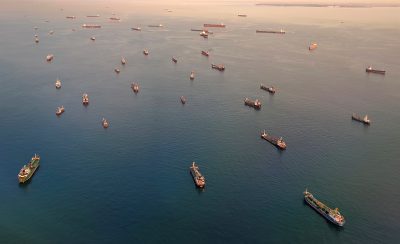Author: Carlos Kuriyama, APEC Secretariat
Implementing or threatening another territory with economic sanctions in order to achieve a nation’s political end is an age-old tactic. In ancient and medieval Europe, trade blockades were put in place to obtain commercial privileges or to compel opponents to surrender. Today, with globalisation, territories are more connected and interdependent, and the mechanisms of economic coercion are evolving in these new circumstances.

Common coercive tools in trade include import tariffs, trade remedies and export prohibitions or restrictions affecting specific goods from a particular source or origin. Other methods include cutting foreign aid, freezing financial assets, removing banks from the SWIFT (Society for Worldwide Interbank Financial Telecommunication) clearance system, rejecting regulatory approvals and the boycott of particular products.
Yet, in today’s highly interdependent global economy, most of these coercive actions have proven ineffective. For example, in negotiating the US–China Phase One trade deal, the Trump administration failed to compel China to increase purchases of select manufacturing, agricultural, energy products and services from the United States as initially agreed. Chad Bown’s recent study shows that US exports to China of goods included in that deal totalled US$94 billion by the end of 2020, an increase of 13 per cent over 2019 and representing only 59 per cent of the commitment.
Economic coercion also impacts those who aim to coerce. US firms and consumers have paid for the tariff hikes on Chinese products through the increased price of imported consumer goods and the higher cost of components and equipment imported from China to produce goods and provide services in the United States. Before the COVID-19 pandemic, US exports of goods to China decreased by 11.2 per cent in 2019, due to retaliatory tariffs imposed by China after the Trump administration increased tariffs against a range of Chinese products. This retaliation affected workers in US firms that suddenly faced unfavourable terms on which to compete in the Chinese market.
The phase one deal also impacted third parties negatively, as China began importing more from the United States at the expense of others. In 2019, for example, China increased its imports of US soybeans by 77 per cent (from US$7.9 billion to US$14.2 billion) but reduced soybean imports from Argentina by 38 per cent (from US$3 billion to US$1.8 billion).
Economic coercion complicates the restoration of relationships based on mutual trust. It intensifies nationalism and generates antipathy towards the coercing state among vast segments of the population in the state that’s targeted.
In 2019, Japan implemented tighter export controls on hydrogen fluoride, fluorinated polyimide and photoresists — three key chemicals for semiconductor production — to South Korea, claiming that those chemicals could be used for military purposes if on-sold to hostile third parties.
In South Korea these measures were considered as a retaliation against a Supreme Court decision that ordered particular Japanese firms to compensate Koreans who were used as forced labour during the Second World War. Japan’s export controls prompted immediate consumer boycotts in Korea against Japanese products, resulting in the withdrawal of automaker Nissan from the Korean market. South Korea retaliated with Japan’s removal from a ‘white list’ of preferred trade partners.
The Japan–South Korea export controls have affected IT product supply chains, as firms in South Korea were largely importing those chemicals from Japan. It is unsurprising that Korean chaebols have been looking for strategies to partially decouple from Japan, such as identifying other import sources and investing in the domestic production of these chemicals that are critical to semiconductor production.
None of the measures implemented during the Japan–South Korea trade row have been effective at forcing the other party to change its stance. On the contrary, the pressure to decouple frustrated established synergies based on comparative advantages and imposed higher costs of doing business.
Similarly, recent Chinese actions against Australian exports have not been effective at forcing Australia to reverse its decisions to block Chinese foreign investment deals in strategic sectors — including the ban on Huawei to provide equipment for an Australian 5G network and its call for an independent World Health Organization inquiry about the origin of COVID-19.
Chinese tariffs and other trade restrictions have affected Australian firms by diverting purchases to other suppliers. China’s imposition of anti-dumping measures and countervailing duties on Australian barley reduced Australia’s barley exports to China — its main foreign market — from US$410 million to US$330 million between 2019 and 2020.
A consequence of these trade-related actions is the rapid deterioration of China’s reputation in Australia and around the world. A 2020 Pew Research Center survey shows that 81 per cent of Australian respondents had negative views of China, up from 32 per cent in 2017. This survey suggests that China’s actions are counterproductive in influencing Australian groups to lobby for policy changes that meet China’s political interests.
Working together is vital in the era of globalisation, as interdependence is high and the costs of economic coercion are two-way and have complex effects on third parties. Building long-term trust-based relationships among governments is an important step towards reducing the use of economic coercion and resolving disputes in an amicable manner.
Carlos Kuriyama is a Senior Analyst at the APEC Secretariat’s Policy Support Unit.
An extended version of this article appears in the most recent edition of East Asia Forum Quarterly, ‘Reinventing global trade’, Vol. 13, No 2.
The views expressed in this article are the author’s own and do not represent the views of the APEC Secretariat or its members.
The post The international economics of self-harm first appeared on East Asia Forum.
Source link





